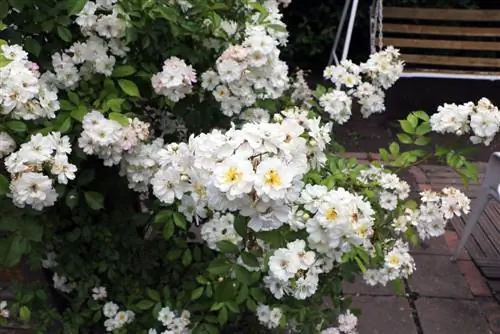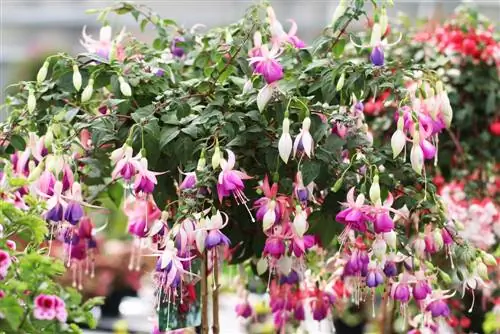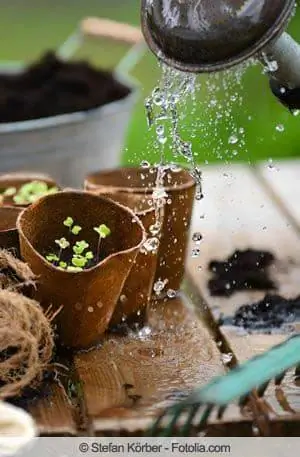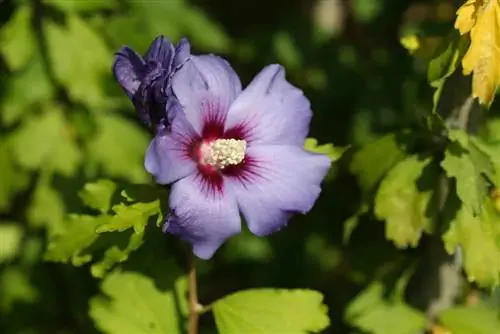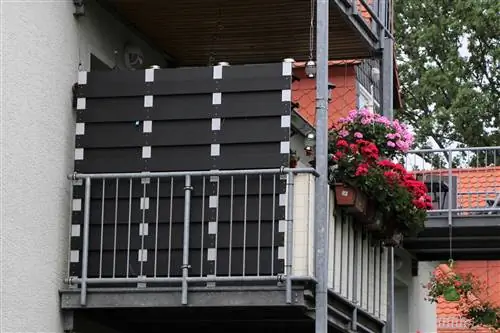- Author admin [email protected].
- Public 2023-12-17 03:39.
- Last modified 2025-06-01 06:48.
No matter whether you like to sniff a rose or prefer the fresh smell of a lemon, scented plants have accompanied humans and animals since prehistory. There are countless plant species that are perfect for the garden, windowsill or balcony and seduce the senses with their unique aroma.
Scented plants - spoiled for choice
The variety of scented plants is extremely large and for this reason it is helpful to have an overview of the different plants. Every gardener, plant lover or simply connoisseur of natural aromas will be able to find suitable plants that correspond exactly to their own preferences and, above all, can develop entire worlds of scents in the garden.
The aromas range from tart to sweet to intoxicating, and many of the plants are used in perfumes, soaps and even dishes to take advantage of each plant's specific properties. The following list of fragrant plants is based on their German name. These include individual species and entire families, most of which produce fragrant species. The botanical name was given because this makes it easier to find the species. The following plants seduce the nose with every step.
Tip:
Take your time with the descriptions and find out about the individual plant genera and subspecies to get new ideas for your own fragrance worlds.
Suitable scented plants for living spaces
Gardenias (Gardenia jasminoides)
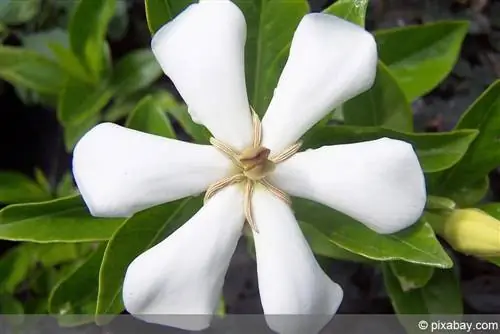
Gardenias are one of the favorite houseplants because they exude an extremely floral scent and can even be kept in the winter garden during the cold season. As jasmine roses, they were already known in the Middle Ages for their healing scent, which, as the name suggests, is reminiscent of jasmine. The coffee plant comes from the tropical areas of Asia and the Old World and is said to help you fall asleep.
Gardenias have white petals that become creamy and intensify in scent as the flowering period progresses. Gardenias are perfect as a pot plant as they reach a size of around 60 centimeters. They love light, sun and high humidity, so they prefer a greenhouse in winter.
Hyacinths (Hyacinthus)
Wreath sling (Stephanotis floribunda)
The wreath loop is an evergreen climbing shrub that needs a climbing aid for its long tendrils. It has false umbels made up of fragrant flower stars. If the flowering is controlled by temperature and light intensity, it will also flower in winter.
Orchids (Phalaenopsis)
Of course, the orchids should not be forgotten when it comes to scented flowers. Like lilies, they are a welcome guest in the home because they can be grown perfectly here. The typical moth orchids have been a highlight for hobby gardeners for many years because they are very easy to care for, but only a few of the species smell at all. This is due to the severe overbreeding of Phalaenopsis, which are bred for quantity and have therefore lost their original scent.
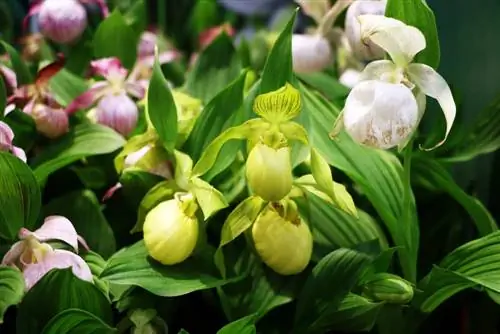
But there are still scented orchids that require exactly the same care as other types of orchids, but are a purely natural form of orchid. A good example of this is the Phalaenopsis corningiana, which can even fill the entire room. It is very spicy, almost cinnamon-like and immediately draws attention to itself. She is a true queen.
Procelain flower / wax flower (Hoya bella and Hoya carnosa)
Wax flowers are tropical climbing plants that produce many umbels of fragrant, porcelain-white flowers in summer. The best known are Hoya bella and Hoya carnosa.
Scented plants for the balcony
Whether in the classic balcony box, in the bucket or in the flower pot on the balcony, scented plants can also be grown and grown here.
Herbs
- Basil (Ocimum)
- Mints (Mentha)
- Marjoram (Origanum majorana)
- Parsley (Petroselinum crispum)
- Rosemary (Rosmarinus officinalis)
- Sage (Salvia)
- Thyme (thymus)
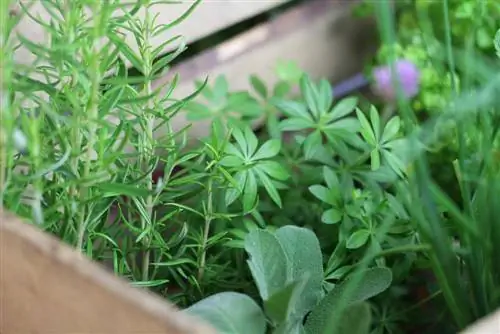
Herbs of all kinds are suitable in their various forms for the home and the garden. Plant rosemary and thyme in beds or parsley in pots and use the herbs in the kitchen or hang them up to dry. Basil's scent is reminiscent of Italy, while sage always has a bitter aftertaste of pine, but is extremely important as a medicinal plant. Mint like peppermint is a paradise for bees and also works against mosquitoes, which cannot stand the smell at all. Together, the herbs work either in pots, as a bed or as borders in the garden and create interesting fragrance worlds that are aromatically stimulating.
potted plants
- Pineapple flower (Eucomis)
- Elven Mirror (Nemesia)
- Scented Pelargoniums (Pelargonium species)
- Dipladenia (Mandevilla)
- Hydrangea (Hydrangea)
Jasmine (Jasminum)
Jasmine is, along with roses, a main ingredient in perfumes. Anyone who has ever wandered through the jasmine gardens of the city of Grasse in France, the perfume capital of the world, will not soon forget this intensity. There are different types of jasmine and some plants like Carolina jasmine aren't even really jasmine. However, all plants that are called jasmine have the ability to smell. And that is strong and beguiling. Jasmine is a climbing plant that also does very well in small pots and is therefore perfect for the balcony or terrace. As long as you protect the jasmine from the blazing midday sun and strong winds, you can smell the fulfilling scent every day. Due to its bitter nature, it is a popular contrast to the rose, which is rather sweet.
- Lavender (Lavandula)
- Morning glories (Ipomoea)
Snowballs (viburnum)
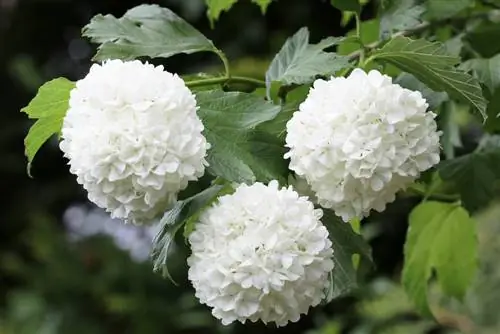
The scented viburnum (Viburnum farreri) is a musk herb that is known for its numerous flowers in pink and white and its sprawling growth. Its original home is northern China and the hardy shrub makes a great border in the garden or for small oases intended for relaxation. If you love marzipan or fresh, sweet scents, you will really enjoy the scented snowball. Its flowers exude such an intense scent that your senses can pick it up and enjoy it from several meters away.
Tube roses (Polianthes tuberosa)
Compared to all other plants, tuberose takes first place among fragrant plants. Tuberose is a night hyacinth and is very popular for its essential oil and is the main ingredient in many perfumes that are said to be warm and floral. The scent of tuberose is described as beguiling, uniquely dense and like a melange of many flowers that combine in high concentration. This is what makes tuberose such an interesting plant that is also easy to care for once the soil and ambient temperature are right. It is not so happy in the garden, but is even more suitable as a house plant. Inside the apartment, its scent will ensure well-being and its white flowers, although simple, are welcome as a fashionable accent.
Vanilla flower (Heliotropium arborescens)
Citrus family
Anyone who has ever had oranges, lemons, limes, mikan, satsuma, tangerines, clementines or grapefruits in their hands or on their plate will know how penetrating and intensely fresh a citrus fruit smells. Compared to flowers and bushes, these fruits are found primarily on small and large trees, which provide annual yields. But it's not just the fruits that are appealing to gardeners and connoisseurs, but also the flowers.
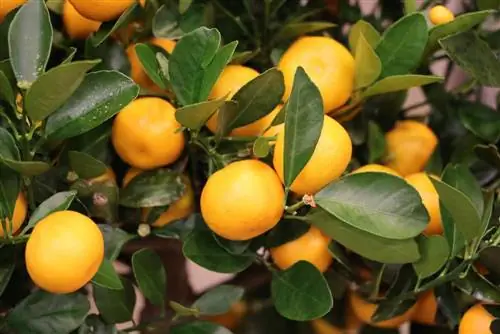
Orange blossoms are one of the strongly scented citrus blossoms and are very often used in perfumery. They can be grown in different sizes in the garden, on the balcony and in the apartment as soon as they have enough light and warmth. If you grow citrus fruits in the garden, they can grow into magnificent trees that will captivate you with their scent every year and provide you with juicy fruits. Tip: Use the orange petals in tea or pastries. There they develop their oil and give the enjoyment a tasty note.
Scented plants for the garden from A to Z
A
- Evening scented catchfly (Silene italica)
- Pineapple sage (Salvia rutilans)
- Anil de Muerto (Verbesina fasciculata)
- Arabian marigold (Cladanthus arabicus)
- Arabian jasmine (Jasminum sambac)
- Artemisia (Artemisia)
- Australian frangipani (Hymenosporum flavum)
B
- Balsam Poplar (Populus balsamifera)
- Balsam poplar, Lungauer (Populus trichocarpa)
- Beardflowers (Caryopteris)
- Tree medlar (Cotoneaster watereri 'Cornubia')
- Bee tree (Tetradium daniellii)
- Mussam flowers (Amberboa)
- Blue woodruff (Asperula orientalis)
- Burning Bush (Dictamnus albus)
- Brunfelsia (Brunfelsia)
C
Carolina jasmine (Gelsemium sempervirens)
D
- Damascus roses (Rosa x damascena)
- Scented Echinacea 'Hot Papaya' (Echinacea purpurea)
- Scented flowers (osmanthus)
- Scented sweet pea (Lathyrus odoratus)
- Scented Orchid (Phalaenopsis corningiana)
E
European pipe bush (Philadelphus coronarius)
F
- False mandrake root (Tellima grandiflora)
- Fleshberries (Sarcococca)
Lilac (Syringa)
Lilac is an impressive summer bloomer that not only impresses with its bright colors from May to June. Lilac has a distinctive scent that is particularly good in the garden. There is generally no other choice when it comes to lilacs, as the plant can reach a maximum height of around seven meters. Lilac can be recognized by the flowers, which appear in full panicles and attract every nose.

The classic scent relaxes the senses and is especially beneficial for the senses during a relaxing afternoon in your own garden. It immediately reminds you of childhood, perfume and summer and also attracts a variety of insects that like to gather around the inflorescences. Butterflies, bumblebees and bees in particular really like buddleia and a lilac in the garden is not only suitable for smelling, but also for observing the little creatures.
- Lady mint (Tanacetum balsamita)
- Fruit gum plant (Cephalophora)
G
- Garden mignonette (Reseda odorata)
- Gaudich (Isotoma fluviatilis)
- Honeysuckle family (Caprifoliaceae)
- Common night violet (Hesperis matronalis)
- Soapwort (Saponaria officinalis)
- Spice bushes (Calycanthus)
- Spice Lily (Kaempferia galanga)
- Gorse (Genista)
- Gold Chalice (Solandra)
- Gold lacquer (Erysimum cheiri)
H
Holy Herb (Santolina)
I
Indian jasmine (Jasminum multiflorum)
J
- Jaborosa (Jaborosa)
- Jacob's Ladder (Polemonium)
- Japanese paper bush (Edgeworthia chrysantha)
K
- Camellias (Camellia)
- Cassia (Cassia)
- Sticky goosefoot (Dysphania botrys)
- Clover elm (Ptelea trifoliata)
- Buttonbush (Cephalanthus occidentalis)
- Knotweed (Persicaria)
- Korean Abelia (Abelia mosanensis)
- Cake trees (Cercidiphyllum)
L
- Lark spurs (Corydalis)
- Levkojen (Matthiola)
- Lilies (Lilium)
- Lot trees (Clerodendrum)
M
- Magnolias (Magnolia)
- Lily of the valley (Convallaria majalis)
- Sea bean (Canavalia rosea)
- Milk trees (Euphorbia)
- Clary sage (Salvia sclarea)
- Myrtle (Myrtus communis)
N
- Evening primrose (Oenothera biennis)
- Nagarmotha (Cyperus scariosus)
- Daffodils (Narcissus)
- Natal plum (Carissa macrocarpa)
- Cloves (Dianthus)
Ö
Olive willows (Elaeagnus)
P
- Pakalana (Telosma cordata)
- Patchouli (Pogostemon cablin and Pogostemon heyneanus)
- Pennigwort (Lysimachia nummularia)
- Pentecost carnation (Dianthus gratianopolitanus)
- Peonies (Paeonia)
R
Rangoon creeper (Combretum indicum)
Roses (Pink)
The roses are of course one of the best-known plants that make themselves felt with a scent. They are grouped under the genus “Rosa” and there are up to 250 species, some of which are particularly fragrant. A good example of this is the Damask rose, which is best planted in small groups in the garden and presents itself at the beginning of summer with a multitude of flowers that fill the entire garden with their scent.
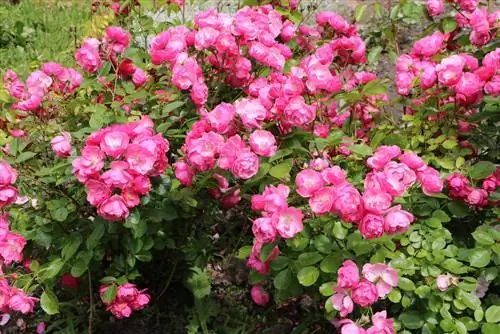
This is mainly due to the over 400 fragrances that are contained in the essential oil of the flower petals. In addition to this rose, there are many varieties of roses that bloom in red, white, yellow or pink and have an aroma that ranges from spicy to extremely floral. There are special rose hybrids that are perfect for keeping in the apartment and only grow to a height of around 20 to 30 centimeters.
S
- Chocolate flower (Berlandiera lyrata)
- Chocolate cosmos (Cosmos atrosanguineus)
- Snail bean (Vigna caracalla)
- Snow Forsythia (Abeliophyllum distichum)
- Irises (irises)
- Silver Acacia (Acacia dealbata)
- Silver herbs (Lobularia)
- Buddleia (Buddleja)
Solstices (Heliotropium)
With the solstices comes the genus of heliotropes, which were popular and idealized by poets and writers during the Romantic period due to their dark blue flowers. The best-known representative with the strongest scent potential is the vanilla flower, which enchants the eye and is a suitable balcony plant. It smells like vanilla and, despite its scent, which reminds many people of the Orient, comes from the Andes in Peru.
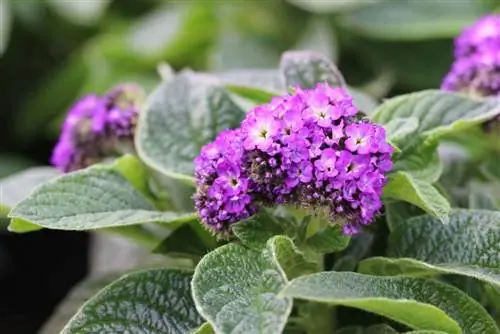
Its toxicity applies to all parts of the plant and should therefore be used with caution if you have small children, dogs or cats. The location on the balcony should be sunny, partial shade is also fine for the evergreen shrub, but it is not hardy and should be brought into the warm in winter.
- Stone thyme (Acinos)
- Star balm (Zaluzianskya capensis)
- Shrub vetch (Coronilla valentina ssp. glauca)
T
Daylilies (Hemerocallis)
V
Violets (Viola species)
Who doesn't love violets. The genus Viola is home to classic garden and balcony flowers such as fragrant violets and pansies, which can be found in almost every German garden. The fragrant violet in particular pampers with its intense scent, even though the flower is only ten centimeters high. It is ideal in combination with roses if the violets are used as underplanting. They also make an attractive border for flower beds and can attractively demarcate certain parts of the garden. The colorful pansies, on the other hand, are always welcome on terraces and balconies when there are many flower pots with them.
W
- Forest goat's beard (Aruncus dioicus)
- Forest Phlox (Phlox divaricata)
- Incense cedar (Calocedrus decurrens)
- Winter aconite (Eranthis hyemalis)
- Smelling honeysuckle (Lonicera fragrantissima)
- Wrightia (Wrightia)
- Miracle flower (Mirabilis jalapa)
Z
- Witch hazel (witch hazel)
- Zimterlen (Clethra)
Why do plants smell?
Plants are tied to one place due to their way of life and for this reason cannot reproduce on their own or escape predators. Therefore, they form chemical substances, especially essential oils, which give the plant its scent. Through this process the plants can:
- Attract pollinators such as bees and butterflies
- Drive out enemies
- communicate
The fragrances are a cocktail of different ingredients that allow the plants to draw attention to themselves or to “talk” to other plants nearby. For example, when there is danger, they excrete certain substances that are in different concentrations and indicate a possible danger. The other plants absorb the substances and pass them on, which in turn influences animals that adapt to the scents.
Therefore, the scent of a plant is not just intended for humans, but rather a communication and protection mechanism. The essential oils of flowers and shrubs can therefore also be extracted and used for other purposes such as perfume production.

